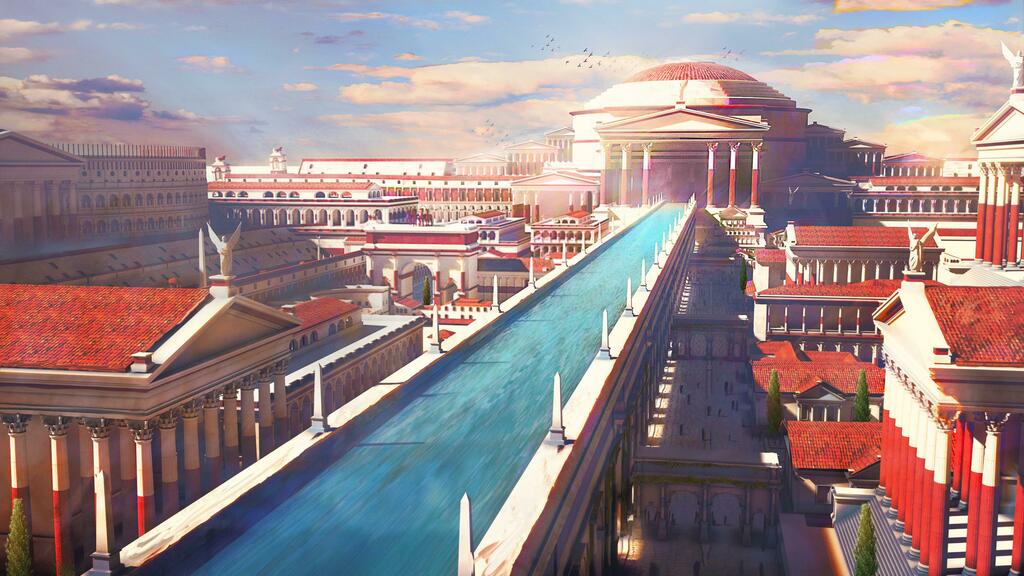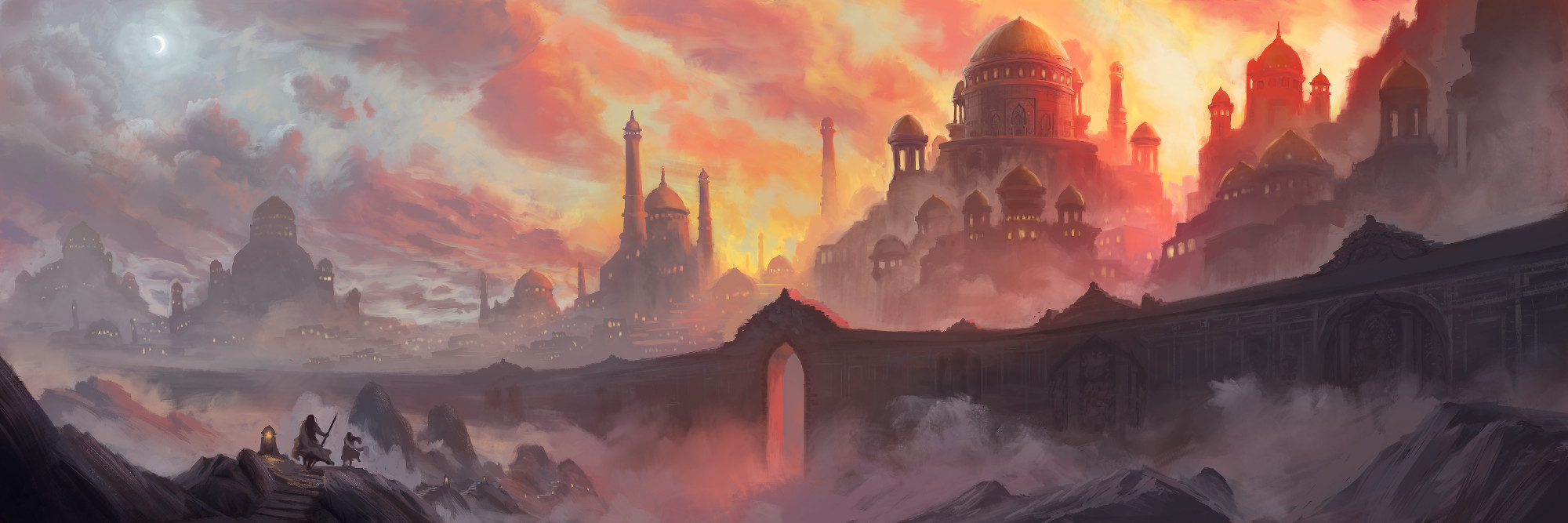Des'dorakha
Art Credit: Landscape photo from the Age of Antiquitiy 5e Kickstarter https://www.kickstarter.com/projects/aruzian/age-of-antiquity
Listed artists are:
Nikita Cherkasov https://www.artstation.com/nikitacherkasov
Sarah Delucchi
https://www.imdb.com/name/nm4240116/
Kurt Ian Ferrer https://www.artstation.com/kyanfiltiarn
Gaston Garcia https://www.artstation.com/gasdrawn
Tadas Sidlauskas https://www.artstation.com/tadas
Ren Tu https://www.artstation.com/ren_tu621
Rachel Wong https://www.deviantart.com/futomakki?fbclid=IwAR2gYR4Z9MU9WqISSIi-VA2BMo6y18IZFfwk8wkj-FyVNgYofqv4ycSIUL8
This post is not an endorsement to donate to the linked Kickstarter page and the picture is used purely for aesthetic purposes.
Government
The Church of Solanil has historically been led by a coalition of both Elves and Humans, though hierarchical leadership has been rare throughout the years. Typically, an overseer was selected unofficially via the trust and faith of their peers and would supervise the creation and dispensation of water, food, medicine, and other church duties.
Since the withdraw of Colum's soldiers, Des'dorakha's government has slowly come into form. It began with two sisters, two native Spirixians who had entered Crixis years earlier and were expelled for what was considered at the time to be dangerous fundamentalism. The two ventured into the Spirixian wilds and communed with the great forgotten gods of the sands, old temples lost below the tides that had not had a living visitor in generations. There, it is said the two tempered their faith in Solanil and emerged with a greater understanding of how the great Goddess of the Oasis determines when and where to provide her favor. Deep in the yawning canyons below Spirix, the sisters found knowledge in the depths that were once said to be home only to Thassa and her most devout followers.
In that place, with great connection to the Earth and the ocean and the sand, at the heart of their homeland, the sisters stayed until the world above forgot about them. They stayed for more than twenty years, emerging after their names had long since been forgotten by all but Solanil herself. Before returning to their home, they gave themselves new names. Arwalyn and Feyphara, old words in their native tongue that translated to To Shepard Clouds and She Who Brings Rain.
When Arwalyn and Feyphara returned to what was still called Crixis, they were complete strangers to the Church of Solanil. But it was just as well, the church was falling and in disrepair as many of its officials fled to Colum, fearing the complete dissolution of the region following the fall of The Assembly. The sisters were faced with the impossible task of rebuilding the organization while remaining completely unknown to its membership and being stripped of all recognition and rank from their previous expulsion. But with their new, deeper understanding of water, life, and Solanil, they were able to easily win the favor of the few remaining church officials. It wasn't long before the two had ascended to the highest possible position within the institution and, recognizing their abilities, were given the dual position as High Priestesses by the most elder clerics remaining.
From there, Arwalyn and Feyphara were able to unite the native people of Spirix under the banner of their deity and bring all of Crixis together in rejoice of the Goddess of the Oasis. Between 1099 and 1105, the sisters slowly expanded the church and built Des'dorakha, creating a powerful Theocracy unmatched by any in the world.
Infrastructure
The Church of Solanil has seen significant expansion in the few years that Arwalyn and Feyphara have risen to power. Seen as the single most important structure in the city, the Church now towers over every nearby building by at least 60 feet. Indeed, The Ordinance of Apogee was invoked in 1109, an old religious rule that declared no building shall rise above the highest point of the church observing any given province's most favored deity.
Extending from the front causeway of the Church is the Highway of Life, an enormous aqueduct that stretches almost 100 miles around Des'dorakha several times and visits every district in at least three places. The Highway of Life carries some 3 million gallons of water each day, and the currents it produces during its peak processing hours can be heard from long distances, like great waves crashing in the ocean.
Districts
Des'dorakha has a few major districts, as well as minor trade sectors, residential areas, and judicial areas for jails.
Of the many districts, undoubtedly the most important is the Religious Cultural district, home to the Church of Solanil, the Aur'teran memorial, the statue of Solanil, and many other cultural landmarks. This district also has more of the Highway of Life in it than any other, and marks its beginning, making it the source of Des'dorakha's water, its heritage, and its culture.
Under the Religious Cultural district, the Paraadt Market district is vitally important to Des'dorakha's financial wellbeing. Crixis was once a trading capital of the world, a meeting point for West and East traders and merchants to come together and exchange wares from all over Ec'algor. Des'dorakha and its people had no desire to rid themselves of that history. Instead, they built on it and, with the guidance of the Church of Solanil, created a truly huge market district where merchants could put up stalls, carts, and shops of all varying sizes. Though it is not as large as Colum's Typhon Trading Square, the Paraadt Market is a proud institution that generates enough money for merchants it has the third-highest tax income per capita in the known world.
Assets
There is a saying in Des'dorakha, a saying popularized by the church in its earliest days, even before it was in the city named Crixis: There is value in gold, and in brass, and even in water. . .but there is more value where water is not.
Theoretically, Des'dorakha has an infinite amount of assets in its ability to manufacture water, despite the fact that nearly 85% of The Highway of Life's volume is freely given to citizens of the city. Magically making water where there was none prior is useful anywhere, most useful in the desert. But what is interesting about their relationship to assets is that they could inflate the value of that water infinitely if given the opportunity. By running their highway dry and hoarding every drop, they could become the richest single entity in the known world, towering over Colum's unimpeachable wealth by many dozens of factors.
That is, however, very unlikely to happen. The new Church of Solanil, its religious leaders, and its dogma all prohibit such greed and would drive a wedge between them and the Spirix they seek to build, the united nation that stretches from Sable to Sharizdur would never form without the ability to quench their thirst.
With the equipment kept by the church, as well as the traffic constantly moving through the Paraadt Market, estimates put the amount of wealth within Des'dorakha at any given time between 10,000,000 and 545,000,000 gold pieces.
History
It is difficult to speak about the capital of the Spirixian Desert in strictly factual terms as it is, by all measures, a true miracle. Near the end of the 1000's Y.E., The Colum Kingdom dedicated soldiers to aid Bearingpool during The Three Crown War. In order to cross the desert more easily, soldiers were stationed in Crixis and then deployed in caravans. The deployment of thousands of troops was seen by many in Spirix as yet another act of foreign aggression and disrespect to sovereign territory, though Queen Cassandra vehemently denied such allegations throughout the war and for years following it.
Although the campaign to defeat The Assembly was successful, tensions mounted in Crixis for months following the end of the war, forcing Colum to withdraw all remaining forces as well as appointed holders of political offices that operated on behalf of their government. Citizens of the desert city were equally unhappy with its domestic government for allowing Colum free rein for so many years. Public protests roared for nearly two years while The Church of Solanil, one of the most important religious institutions in the region, consolidated its power by uniting smaller groups of dissidents under a single deity.
Instead of applying pressure through the control of water, the Church of Solanil gave generously to its citizens and to those in Spirix for travel purposes, breaking a centuries-old tradition of strict rationing to return to the ancient ways of Solanil's scripture. As she taught the first people who settled the sands, water is life and cannot be hoarded, like the infinite ocean all water is sacred and all water is unifying.
Even still, water is a precious resource in all volumes, and the Church offered Spirixian citizens double the standard amount if they observed traditional ritualistic worship and devotion to the Goddess of the Oasis, doubling the amount again for every three weeks they spent in reverence. By doing so, the Church's leadership was able to grow its resource of pious, practicing Clerics capable of creating or assisting in creating more water, growing its power exponentially until it could challenge even Aldrané in political presence.
Every effort of the church was made in accordance with an ancient prophecy known as Des'dorakha, an old Spirixian word that roughly translates to a kind of fabled promised land. By returning to the forgotten ways of Solanil's worship, the church made measured progress toward its end goal of fully reviving the practice of Solanil's first followers. Everything came to a head in 1105, 7 years after the end of the war and the 5th anniversary of Spirixian independence from Colum. Earthquakes tore through the desert region for days while the climate became uncharacteristically temperate. Slowly, from the edge of what was once called Crixis to the inlet leading to the Wynmere river, the ground split and opened in a canyon deeper than The Scar. Then, with a blessing from Solanil herself, a flood of crystal blue water burst from underneath the rocky floor of the canyon like a kingdom-sized geyser. Unlike the water of Wynmere and the Terisian Channel, this water was fresh, clear, clean, and drinkable. It completely changed the region, altering travel routes and settlement locations for nearly every native population. It had finally become the promised land.
Between 1105 and 1113, nearly every nearby political institution surrendered its sovereignty to Des'dorakha, folding themselves into the burgeoning society and the ever-expanding Church of Solanil. Most populations of native Spirixians with nomadic traditions now also recognize the importance of Des'dorakha, observing the important holy days and legal texts they enshrined. Now free of foreign powers, the original people of Spirix have settled into the great cities they have built, united by the ability to sustain themselves through Solanil and her grace. The indigenous Elvish people of the north and northeast, as well as the Orcs of the north and northwest, have been settled in their respective societies of Aldrané and Sharizudr for nearly 2,000 years; the native Smokeless race of Karusha have been in their homeland for almost a millennia longer; Now the nomadic Elves, Humans, Orcs, and Smokeless, and every other race without a native land can call Des'dorakha home.
Architecture
While deep underneath the Spirixian desert, the two sisters Arwalyn and Feyphara are said to have communed with an ancient, lost civilization of myth that once united all of Spirix under a single banner, a single king, and a single city. That place was called Bal'rezael and appeared to outsiders as though it was a piece of the elemental plane of fire itself.
The architecture of Des'dorakha borrows heavily from this long-forgotten era, with long swooping arches of stone, clay, and ceramic accents. Tall buildings have dome tops that glow with yellow and red light, visible at huge distances during the dark Spirixian nights. Towers crawl into the sky, wary not to overlook the Church of Solanil, but still tall enough to cast their shadows long during the day.
This entry is narrated by Sishara Viyen
Founding Date
1105 Y.E.
Type
Capital
Population
1.853 Million
Inhabitant Demonym
Spirixian
Location under
Owning Organization
Remove these ads. Join the Worldbuilders Guild










Comments